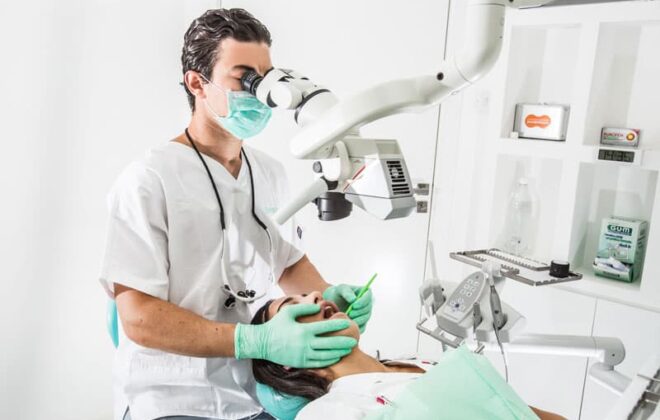5 Ways To Avoid Tooth Infection
A tooth infection is a pocket of pus that is caused by a bacterial infection. Abscesses can occur in different regions of the tooth depending on the cause of the infection. A periapical abscess shows up on the tip of your tooth, while a periodontal abscess is located in your gums and the side of your tooth’s root.
Dentists will treat a tooth infection by draining it and removing infected tissue. Usually, your tooth can be saved with a root canal, but in severe cases, your tooth may need to be pulled. While this may seem extreme, it’s better to pull a tooth than to leave infection and allow it to spread.
Leaving an abscess is not an option. Untreated abscesses can lead to serious, life-threatening complications. When left untreated, an abscess can cause bacteria in your mouth to enter the bloodstream, which can lead to an infection of your heart valves. This weakens the valves in your heart, making them more susceptible to other infections, irregular heartbeat, and other heart problems.
How To Prevent Tooth Infections
Obviously, the best protection is to not get a tooth infection in the first place. And the best way to not get a tooth infection is to keep your teeth as strong and healthy as possible, so bacteria have no weak spots to attack! Here are several steps you can take to ensure that your teeth are healthy, whole, and infection-free:
1. Develop an Oral Hygiene Routine
It should come as no shock that we’re recommending that you brush and floss regularly to keep your teeth healthy and prevent tooth infection. It may not be surprising or exciting, but it is the most important thing you can do for yourself and your teeth.
Brush twice daily and floss at least once a day – preferably in the evening to remove food particles that have gathered throughout the day. Many people may recommend that you brush and floss after every meal, but this isn’t the best advice.
Ironically, overbrushing can weaken your teeth and make them more susceptible to infection. It’s perfectly fine to get that corn or strawberry seed out from between your teeth after lunch, but instead of fully brushing, rinse with warm water or mouthwash.
2. Go To The Dentist
We cannot stress this enough. Go to the dentist every six months. A dentist can see things in your mouth and teeth that you’re not able to see yourself in a mirror. They have a third-person viewpoint as well as the training to spot trouble before you’re aware of it brewing. Catching things early is prevention 101. The sooner you can treat it, the less likely it is to develop into a major health issue.
Hygienist deep cleanings every six months wipe out plaque and bacteria that weaken your teeth and cause tooth infections.
3. Go Easy On The Sweets
So now you may be realizing that most of our advice is comprised of things you’ve heard since you were a child. That’s because these are the things that work – there’s no substitute for common sense. If you follow these principles, your likelihood of developing an infection is significantly lower than average.
So go easy on the sugar! Sugar feeds bacteria. Bacteria weaken teeth, cause tooth decay, and can create bacterial tooth infections.
4. Use Fluoridated Drinking Water
Fluoride strengthens your teeth’s enamel, which makes it more difficult for infection agents like plaque and tarter to set up shop in your smile. Most U.S. cities have fluoride in their drinking water already – if that’s the case you can just drink tap water.
If not – or if you drink from a private source or well water – you can actually buy bottled fluoridated water online! Just make sure it’s not too high a dose, as the health effects of too much fluoride are still being studied.
5. Replace Your Toothbrush (More Often Than You Think!)
Finally! An exciting tip with new information! We’re as excited as you are, honestly.
Did you know that toothbrush holders are the third dirtiest, bacteria-ridden household item? And if not cleaned regularly, that bacteria can climb up your toothbrush and infect the bristles?
Gross!!
Besides cleaning your toothbrush holder at least every two weeks, you should also be replacing your toothbrush at least every three months – sooner if your bristles start to fray. As soon as the bristles start to fray, bacteria can build up in them and then that bacteria is transferred to your mouth.
We don’t want to be gross, but usually, people’s toothbrush holders are on the sink or counter near the toilet. And when the toilet flushes and sprays microscopic bacteria and fecal particles into the air, that lands on your toothbrush. So replace them…please.
Article originally appeared at: https://www.idoendo.com/
Author: James A. Penney, III, DDS



